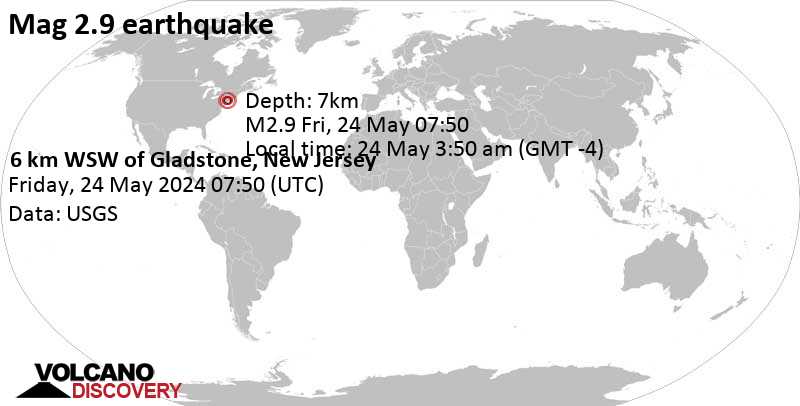A small earthquake shook parts of New Jersey early Friday morning, adding to the region’s seismic activity over the past month. According to the U.S. Geological Survey (USGS), the earthquake measured a magnitude of 2.9 and occurred at approximately 3:50 a.m. Its epicenter was located about 3.7 miles west-southwest of Gladstone, New Jersey, and the quake originated from a depth of around 4 miles. Gladstone is situated in northern New Jersey, roughly 40 miles west of New York City. The quake, although minor, was noticeable and serves as a reminder of the area’s recent seismic activity.

Series of Aftershocks
Friday’s tremor is one of several aftershocks that have been recorded since a much larger earthquake hit the region on April 5. The earlier quake, which had a magnitude of 4.8, was felt by millions across the New York City metro area and stands as one of the most significant quakes to impact the East Coast in the last century. Aftershocks are common following a significant earthquake, as the earth’s crust adjusts to the new stress distribution. While aftershocks are generally less powerful than the main quake, they can still be felt and cause minor disturbances.
Understanding Earthquake Magnitude
The magnitude of an earthquake is a measure of its strength, and it is quantified using the moment magnitude scale. This scale is logarithmic, meaning that each whole number increase represents a tenfold increase in measured amplitude and roughly 31.6 times more energy release. For example, a 5.2 magnitude earthquake is considered moderate, whereas a 6.2 magnitude quake is classified as strong.
Here is a breakdown of earthquake magnitudes and their potential effects, as explained by Michigan Technological University:
- Below 2.5: Generally not felt.
- 2.5 to 5.4: Minor or no damage.
- 5.5 to 6.0: Slight damage to buildings.
- 6.1 to 6.9: Serious damage.
- 7.0 to 7.9: Major damage, capable of causing severe destruction.
- 8.0 or greater: Massive damage, capable of destroying entire communities.
Preparedness and Awareness
While the recent 2.9 magnitude quake caused no reported damage, it highlights the importance of earthquake preparedness, even in regions like the East Coast where such events are less frequent compared to places like California. Residents are encouraged to have emergency plans in place and to be aware of the basic steps to take during and after an earthquake.

For example, during an earthquake, the safest actions are to drop to the ground, take cover under sturdy furniture, and hold on until the shaking stops. After the shaking ceases, checking for injuries and damages, and being cautious of potential aftershocks are essential steps. However, the recent small earthquake in New Jersey, coupled with the significant quake in April, serves as a reminder that seismic activity, while infrequent, can occur and should be taken seriously. Continued monitoring and preparedness can help mitigate the effects of such natural events.
